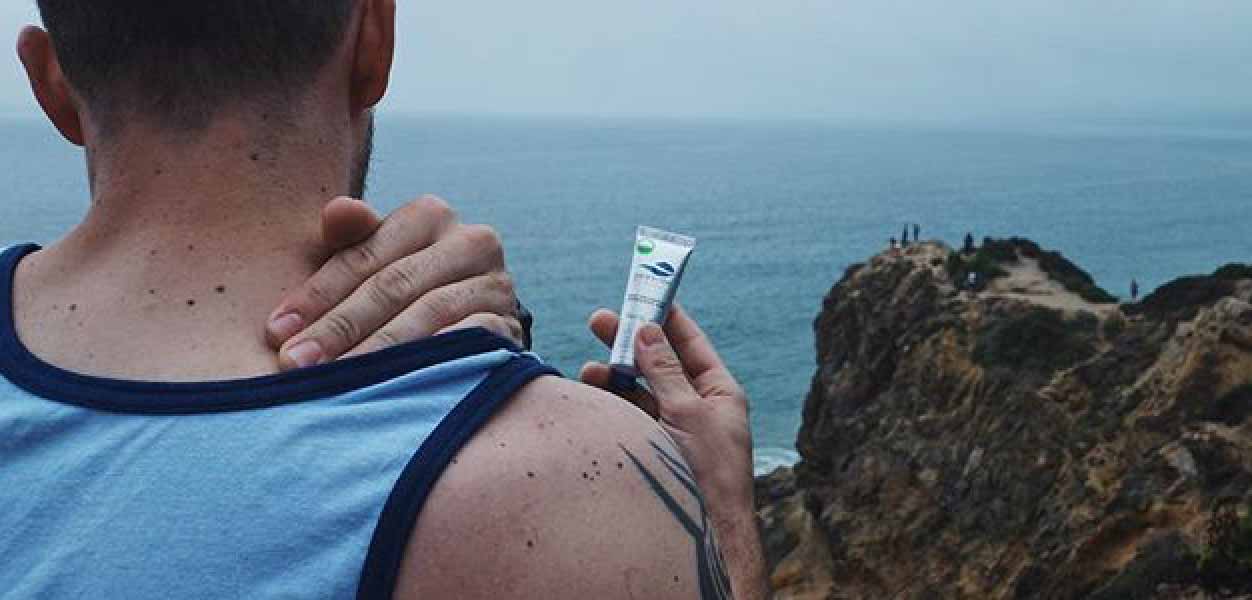Innovative Non-Toxic Skin Healing Solutions

By Dr. Stacy Matthews
The unpleasant sensation we know as pain is a common bodily response to many different stimuli. For example, we often experience varying levels of pain after exercise, particularly after starting or re-entering an exercise program. This is often a reaction of the tissues to activity that they are not accustomed to. This is referred to as delayed onset muscle soreness and is mainly due to very small tears in the muscle fibers. These tears provoke an immune response by the body’s leukocytes (white blood cells) so that the muscle fiber repair process begins. Various types of leukocytes in this process release inflammatory cytokines that cause the post-exercise muscle pain (1) by acting on nociceptors, receptors that sense damage and send pain signals (2).
If muscle and skin trauma occur with limited inflammation, simply resting the muscles for a couple of days can give the body time to recover and prevent additional trauma. Applying an icepack on the sore muscle areas in the earliest stages (first few days of pain occurrence) has analgesic effects. Before resuming activity, a little warmth can then be applied to the muscles. If these approaches do not provide enough relief, over-the-counter anti-inflammatory drugs with analgesic properties (such as ibuprofen) or a plain analgesic such as acetaminophen can be used to help with muscle pain. However, topical pain relief gel is also beneficial and a great option to s without taking medications.
An example is the Post-Traumatic Response Gel with MatrX B, which can be applied directly to the skin for pain relief of skin and muscle soreness. MatrX B contains natural ingredients arnica, astaxanthin, and witch hazel. The combination of these ingredients provides antioxidant effects, relieves pain, and supports the skin and muscle repair processes (3, 4, 5). For minor skin and muscle trauma from other causes (bumps, sprains, strains), the same recommendations can be applied. However, if severe pain is felt or soreness does not subside within a week, medical attention of a healthcare provider should be sought to determine the existence of other more serious injury or illness and to get the best specific therapy.
1. MacIntyre DL, Reid WD, McKenzie DC. Delayed muscle soreness. The inflammatory
response to muscle injury and its clinical implications. Sports Med. 1995
Jul;20(1):24-40.
2. Shubayev VI, Kato K, Myers RR. Cytokines in Pain. In: Kruger L, Light AR, editors. Translational Pain Research: From Mouse to Man. Boca Raton, FL: CRC Press/Taylor & Francis; 2010. Chapter 8. Available from: https://www.ncbi.nlm.nih.gov/books/NBK57275/
3. Pumpa KL, Fallon KE, Bensoussan A, Papalia S. The effects of topical Arnica on
performance, pain and muscle damage after intense eccentric exercise. Eur J Sport
Sci. 2014;14(3):294-300.
4. Djordjevic B, Baralic I, Kotur-Stevuljevic J, Stefanovic A, Ivanisevic J,
Radivojevic N, Andjelkovic M, Dikic N. Effect of astaxanthin supplementation on
muscle damage and oxidative stress markers in elite young soccer players. J
Sports Med Phys Fitness. 2012 Aug;52(4):382-92.
5. Korting HC, Schäfer-Korting M, Hart H, Laux P, Schmid M. Anti-inflammatory
activity of hamamelis distillate applied topically to the skin. Influence of
vehicle and dose. Eur J Clin Pharmacol. 1993;44(4):315-8.
Comments will be approved before showing up.